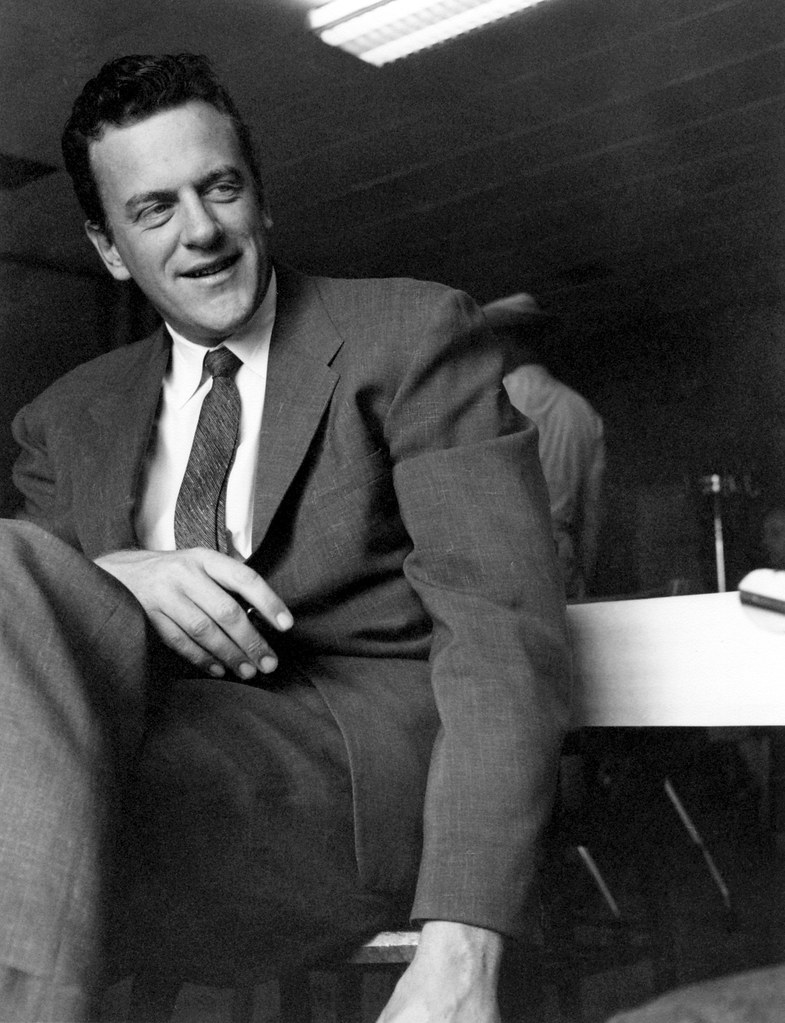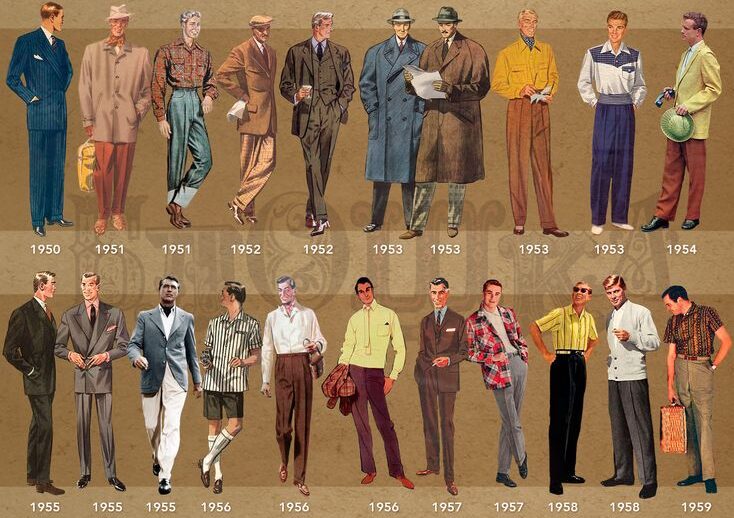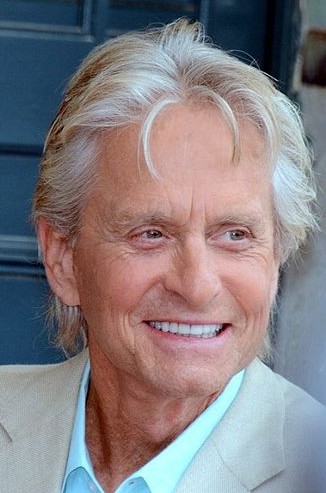
James Arness, whose commanding presence and stoic demeanor became synonymous with frontier justice, remains etched in the annals of television history as U.S. Marshal Matt Dillon. For two decades, he rode the dusty trails of Dodge City, bringing to life a character that felt undeniably real, a lawman who could maintain order with an imposing glance. Yet, beneath the iconic cowboy hat and the legendary long run of “Gunsmoke,” lay a rich tapestry of experiences and hidden facets that shaped the man and the actor.
It’s easy to assume that Arness was simply born for the part, destined to embody the quintessential Western hero. However, his journey to becoming one of America’s most beloved television stars was far more intricate than many realize. From battling personal challenges to making pivotal career decisions, his life was filled with intriguing details that are often overshadowed by his most famous role.
He lived through a handful of experiences that helped him become the perfect Matt Dillon, lessons learned and challenges overcome that forged the tough, yet subtly nuanced, individual we admired on screen. Prepare to uncover the surprising twists and turns that define the remarkable story of James King Aurness, the man who became James Arness, a true American icon.
1. **The Enduring Legacy of Marshal Matt Dillon**James Arness’s portrayal of Marshal Matt Dillon on “Gunsmoke” is, without a doubt, his most celebrated achievement, a role he inhabited for an astounding 20 years. This incredible tenure, from 1955 to 1975, made “Gunsmoke” the longest-running primetime drama series in American television history by the end of its run. What’s even more remarkable is Arness’s unwavering commitment to the character; he didn’t miss a single episode, a testament to his dedication and the central importance of Matt Dillon to the show’s identity.
His record was tied in 2010 by “Law & Order” and again in 2018 by “Law & Order: Special Victims Unit,” yet Arness’s feat stands out. Unlike the latter show, “Gunsmoke” featured its lead character, Arness, in each of its 20 seasons, solidifying his indispensable presence. The sheer volume of work is also staggering, with “Gunsmoke” airing 179 more episodes than the later shows. This consistency and longevity underscore the profound impact Arness had on shaping the landscape of television drama.
The series was not just long-running; it was immensely popular, spending 13 seasons in the top 10 ratings, including an impressive four consecutive seasons at number one. Arness’s character became a cultural touchstone, a symbol of unwavering justice and resilience that resonated deeply with audiences across generations. Even after the weekly series concluded, Arness reprised his role in “Gunsmoke: Return to Dodge” (1987) and four more made-for-television “Gunsmoke” films in the 1990s, demonstrating the enduring power of Matt Dillon and the actor who embodied him.
Read more about: From Rugged Outlaws to Unflinching Lawmen: 15 Wild West Characters Who Defined the Frontier on Screen

2. **A Towering Presence: His Impressive Height**One of the most physically striking aspects of James Arness was his formidable stature. Born James King Aurness, he stood at an impressive 6 feet 7 inches (2.019 m) by the time he was a teenager. This towering height wasn’t just a physical characteristic; it profoundly influenced his life and career, often working both as a blessing and, at times, a curse. His imposing size certainly contributed to his commanding screen presence, making him a natural fit for roles that required authority and a larger-than-life quality, like Marshal Matt Dillon.
In his 2001 autobiography, Arness himself recounted the dual nature of his height during his formative years, stating, “I took a lot of razzing from the other students asking me how the weather was up there and other such remarks, poking fun at me. Kids are cruel, and I resented their teasing.” This early experience of standing out likely helped him develop a thick skin, a quality that would serve him well in the demanding world of acting and in embodying characters like Matt Dillon who had to maintain order just by walking into a room.
Beyond social interactions, his height even had practical implications for his aspirations. When he wanted to be a naval fighter pilot, his poor eyesight was a concern, but it was his 6-ft, 7.5-in frame that ultimately barred him, as the height limit for aviators was set at 6 ft, 2.5 in. This early setback, however, rerouted him towards a different path, one that would eventually lead to his legendary career, where his imposing physical presence became an asset rather than a hindrance, emphasizing his commanding physical presence.
Read more about: Shaq’s Colossal Impact: How the Unstoppable Force Made NBA History (and Beyond) Look Small

3. **A War Hero’s Purple Heart: Military Service in WWII**Before he ever strapped on Matt Dillon’s iconic six-shooter, James Arness was drafted into the U.S. Army in March 1943 during World War II, embarking on a path of real-life heroism. As a rifleman, he landed on Anzio Beachhead in Italy on January 22, 1944, with the 2nd Platoon, E Company, 2nd Battalion, 7th Infantry Regiment of the 3rd Infantry Division. In a harrowing moment, Arness, because of his towering height, was the first man ordered off the landing craft to determine the depth of the water, which came up to his waist.
Just days after this perilous landing, during the intense Battle of Anzio, he was severely wounded in his right leg by German machine-gun fire. This grave injury necessitated his medical evacuation from Italy back to the U.S., where he underwent several surgeries at the 91st General Hospital in Clinton, Iowa. He was honorably discharged from the Army on January 29, 1945, having earned significant military decorations including the Bronze Star, the Purple Heart, the American Campaign Medal, and the European–African–Middle Eastern Campaign Medal with three bronze battle stars and an arrowhead device, among others.
The effects of his wartime injuries, unfortunately, continued to plague him throughout the remainder of his life. He suffered from chronic leg pain that often became acute, sometimes initiated even when he was mounted on horses during his performances on “Gunsmoke.” This lifelong struggle with pain undoubtedly contributed to the gravitas and underlying toughness that audiences perceived in Matt Dillon, a character who carried the weight of his job. The show even had to schedule his walking scenes for the early morning to accommodate his condition, a subtle reminder of the real sacrifices Arness made before Hollywood.
4. **Brotherly Encouragement and a Family of Actors**James Arness wasn’t the only notable actor in his family; he was the older brother of Peter Graves, who would later achieve fame for his role in “Mission: Impossible.” The influence of his younger brother played a significant role in Arness’s entry into the entertainment world. While Arness was recuperating from his severe leg injury sustained in World War II, Peter came to visit him, offering crucial encouragement at a pivotal time.
In his autobiography, Arness revealed that Peter, then known by the maternal family name “Graves” which he adopted as his stage name, told him, “At the University of Minnesota I took radio drama and announcing. It was great. I think you might really enjoy it too.” This advice planted a seed, leading James to consider a career in performance. It was a brotherly nudge that proved to be a life-altering suggestion, pointing him towards a path he might not have otherwise considered while still recovering from his wartime trauma.
The Aurness family, with journalist Ruth Duesler as his mother and businessman Rolf Cirkler Aurness as his father, had a background that blended practical skills with intellectual pursuits. Peter’s early foray into radio drama likely demystified the performance world for James, making it seem like an accessible and viable option. This shared interest and mutual support between the brothers highlight a lesser-known aspect of James Arness’s development, underscoring the importance of family ties in his journey to stardom.

5. **From Radio Announcer to Hollywood Hitchhiker**After his honorable discharge from the Army in January 1945, and perhaps fueled by his brother Peter’s suggestion, James Arness began his entertainment career not on screen, but as a radio announcer. He found work at Minneapolis station WLOL, laying the groundwork for his future in performance. This early experience in radio likely honed his vocal delivery and presence, skills that would be invaluable when he transitioned to acting.
However, the allure of the silver screen was strong. Determined to find work in films, Arness made a courageous decision: he hitchhiked all the way to Hollywood. This act of sheer determination speaks volumes about his ambition and willingness to take risks to pursue his dreams. Once in Hollywood, he didn’t just wait for opportunities to come to him; he diligently made the rounds to agencies and casting calls, actively seeking out his big break.
His persistence paid off, and he soon began to land small acting roles and appear in films. His film debut was at RKO, which immediately changed his name from “Aurness” to “Arness” for professional purposes. He was credited in “The Farmer’s Daughter” as Loretta Young’s brother, Peter Holstrom, though still using “Aurness” initially, showcasing the very beginning of his transition from a Minnesota native with a military past to a burgeoning Hollywood actor.

6. **Becoming “The Thing”: His Breakthrough Sci-Fi Role**While James Arness would become synonymous with the Western genre, one of his most significant early career breaks came in an entirely different domain: science fiction. In 1951, he landed the titular role in the classic sci-fi film “The Thing from Another World.” In this movie, he portrayed the formidable alien creature, a role that required him to be encased in heavy makeup and costume, relying on his imposing physical presence to convey menace and otherworldliness.
This role was a pivotal moment for Arness, providing him with much-needed visibility in a competitive industry. He shared his thoughts on this opportunity in a 2005 interview with the Sarasota Herald-Tribune, stating, “When Howard Hawks put me in ‘The Thing,’ it was a great break for me at the time, because I was struggling to get any kind of job whatsoever, and that picture got a tremendous amount of publicity…and got me other work afterward.” The film’s critical success and considerable publicity effectively launched his career beyond minor supporting parts.
Beyond “The Thing,” Arness also acted in another notable science-fiction film, “Them!” demonstrating his versatility early on. These roles showcased his ability to inhabit diverse characters, even monstrous ones, and proved that his talent extended beyond the typical cowboy archetype. It was these early, varied experiences that built his repertoire and prepared him for the iconic Western roles that would eventually define his career, proving he was more than just a towering figure.
Read more about: From ‘Clueless’ to Activism: How Alicia Silverstone Became Our Enduring ’90s Icon

7. **The Duke’s Endorsement: John Wayne’s Crucial Mentorship**The trajectory of James Arness’s career took a dramatic and fortunate turn when he crossed paths with Hollywood legend John Wayne. After being spotted by Wayne’s agent in a play, a meeting was set up, leading to Arness securing small parts in a handful of Wayne’s movies. The two became close friends, starting with their work on films like “Big Jim McLain,” “Hondo,” “Island in the Sky,” and “The Sea Chase.” Arness even starred in “Gun the Man Down,” a fast-paced Western produced by Wayne’s company.
Wayne was clearly impressed by Arness’s potential, enough to put him under a personal contract for three years. This mentorship was invaluable, providing Arness with consistent work and exposure alongside one of the biggest stars in Hollywood. However, Wayne’s most significant contribution to Arness’s career came when CBS was casting the lead role of Matt Dillon for “Gunsmoke.”
Despite an urban legend that Wayne turned down the role himself, which he did not, Wayne vehemently pushed for James Arness to get the part. He was never actually offered the role but was instrumental in Arness securing it. To emphasize his belief in Arness and to give the fledgling television show a massive boost, Wayne made a rare TV appearance, introducing Arness as Matt Dillon in a prologue to the very first episode of “Gunsmoke” in 1955. This powerful endorsement from “The Duke” was a monumental moment that catapulted Arness into the national spotlight, proving Wayne thought he had true star potential.

8. **Beyond Dodge City: His Diverse Post-Gunsmoke Career**While James Arness will forever be etched in the public consciousness as Marshal Matt Dillon, his career didn’t simply end when ‘Gunsmoke’ ceased its weekly broadcasts in 1975. Far from it, Arness continued to captivate audiences, albeit in different capacities, demonstrating a versatility that extended beyond the familiar dusty streets of Dodge City. He reprised his iconic role multiple times, solidifying the enduring legacy of Matt Dillon for a new generation.
Indeed, Arness returned to his most famous character for ‘Gunsmoke: Return to Dodge’ in 1987, and then again in four more made-for-television ‘Gunsmoke’ films throughout the 1990s. This remarkable feat means he portrayed Matt Dillon across five different decades, a testament to his dedication and the character’s timeless appeal. These cinematic returns allowed fans to reconnect with the beloved lawman and provided Arness an opportunity to revisit the role that defined his career.
However, Arness also ventured into entirely new territory. He starred as a big-city police officer, Det. Jim McClain, in the short-lived 1981–1982 series ‘McClain’s Law,’ showcasing his ability to inhabit a different kind of lawman. Perhaps his most significant post-‘Gunsmoke’ role was as the rugged mountain man Zeb Macahan in the Western series ‘How the West Was Won.’ This role garnered him immense popularity, especially transforming him into a true cult figure in many European countries, where the series was rebroadcast numerous times and became even more popular than in the United States. His career, it turns out, was far from a one-pony show.
9. **The ‘Greta Garbo of Dodge City’: A Man of Hidden Laughter and Disdain for Publicity**Behind the stoic, resolute exterior of Marshal Matt Dillon, James Arness harbored a deeply private and surprisingly humorous personality. Despite his on-screen gravitas, those closest to him knew a man who could light up a room with laughter. His ‘Gunsmoke’ stunt double, Ben Bates, famously recounted that Arness laughed ‘from his toes to the top of his head,’ a vivid image suggesting a joy that truly permeated his entire being.
This hidden mirth sometimes even brought production to a halt. There were instances when shooting on the ‘Gunsmoke’ set had to be suspended because Arness succumbed to uncontrollable giggles. It’s a charming detail that paints a picture of a man who found genuine delight, contrasting sharply with the unyielding demeanor of his most famous character. This private side made him even more intriguing to those who knew him.
Yet, for all his inner warmth, Arness actively shied away from the glare of public attention. He disdained publicity to such an extent that he famously banned reporters from the ‘Gunsmoke’ set. This aversion to the spotlight, coupled with his reputation as a shy and sensitive individual, led ‘TV Guide’ to famously dub him ‘The Greta Garbo of Dodge City.’ He found solace not in interviews or public appearances, but in quiet passions like poetry, yacht racing, and surfing, revealing a complex soul far removed from the public persona.

10. **The Unseen Struggles: A Complex Personal Life Marked by Love and Loss**Beyond the glitz of Hollywood and the enduring fame of ‘Gunsmoke,’ James Arness navigated a personal life that was, like many, filled with both profound joys and heartbreaking tragedies. His journey through marriage and family offers a poignant glimpse into the man behind the badge, revealing complexities often hidden from the public eye. It was a life deeply touched by love, but also shadowed by significant sorrow.
Arness first married Virginia Chapman in 1948. Together, they embarked on the adventure of building a family, which included adopting Virginia’s son, Craig, born in 1946. Their family grew further with the birth of their son, Rolf, in 1952, and their daughter, Jenny Lee Arness, born in 1950. While many fans might only recall his iconic role, these personal connections formed the bedrock of his life, providing him with a grounding influence amidst his burgeoning career.
However, their marriage eventually ended in divorce in 1960. A difficult period followed, but Arness was granted legal custody of his children, a testament to his commitment as a father. Tragedy struck years later with the untimely death of his daughter, Jenny, in 1975 from an apparently deliberate drug overdose. Further heartbreak arrived in 1977 when his former wife, Virginia, also died from an accidental drug overdose. These deeply personal losses undoubtedly left an indelible mark on Arness, shaping his perspective and fortitude.
Despite these profound challenges, Arness found love again. Four years after his divorce from Virginia Chapman, he began a six-year relationship with Thordis Brandt. Then, in 1978, he married Janet Surtees, who remained his wife until his passing. Janet, along with his sons, survived him, ensuring that even after a life filled with professional triumphs and personal heartaches, Arness found lasting companionship and family support.
Read more about: Beyond Patrick Jane: Charting the Evolving Career and Personal Life of Simon Baker, The Mentalist’s Enduring Star

11. **Children Forging Their Own Paths: Surfing Champions and Acclaimed Photographers**While James Arness carved an indelible legacy in Hollywood, his children, too, pursued remarkable paths, often achieving significant recognition in fields far removed from the soundstages of Westerns. Their accomplishments underscore a family dynamic that encouraged individual passions and excellence, reflecting a diverse range of talents that extended beyond acting.
His son, Rolf Aurness, born in 1952, made a name for himself in the demanding world of professional surfing. In 1970, Rolf reached the pinnacle of his sport, becoming the World Surfing Champion. This achievement is a testament to his dedication, skill, and athleticism, showcasing a different kind of strength and mastery than his father’s on-screen heroics. It truly demonstrates that talent can manifest in many exciting ways.
His adopted son, Craig Arness, born in 1946, also found great success, but through the lens of a camera. Craig founded Westlight, a prominent stock photography agency, and distinguished himself as a photographer for National Geographic. His work contributed to one of the most respected publications globally, capturing captivating images and telling stories through visual artistry. Both sons, in their own right, became champions and respected professionals, creating legacies independent of their famous father.

12. **A Surprising Talent: The Jazz Musician Behind the Marshal’s Badge**Here’s a fact that might truly surprise even the most ardent fans of James Arness: the towering lawman of Dodge City possessed a hidden musical talent that he cultivated long before his Western icon status. It turns out that Arness was not just an actor with a commanding presence; he was also a skilled jazz musician, adding another layer of complexity to his already fascinating persona.
Few people realize that James Arness had a genuine talent for playing the trumpet. This wasn’t just a casual hobby; he was adept enough to play with big bands during his early years. Imagine the young Arness, far from the dusty trails of the frontier, honing his craft in jazz clubs, creating melodies with the very instrument he held. It’s a striking contrast to the stoic Marshal Matt Dillon.
This musical inclination speaks volumes about Arness’s multifaceted character, suggesting a man with a rich inner life and diverse interests that extended well beyond the realm of acting. It highlights his artistic sensibilities and his capacity for expression through different mediums. The next time you picture him, perhaps a faint echo of a trumpet’s soulful melody will accompany the image of his iconic silhouette.

13. **A Legacy Etched in Stone: His Numerous Accolades and Recognitions**James Arness’s impact on the entertainment industry was immense, and his enduring contributions were recognized with a multitude of prestigious awards and honors throughout his life and beyond. These accolades serve as a tangible testament to his talent, dedication, and the indelible mark he left on television and film history. His legacy is quite literally set in stone, among other forms of recognition.
For his significant contributions to the television industry, Arness was honored with a star on the Hollywood Walk of Fame, proudly situated at 1751 Vine Street. This iconic marker ensures his name and achievements are permanently woven into the fabric of Hollywood. Moreover, in 1981, he received a notable induction into the Western Performers Hall of Fame at the National Cowboy & Western Heritage Museum in Oklahoma City, celebrating his profound influence on the Western genre.
The recognitions continued with his induction into the Santa Clarita Walk of Western Stars in 2006. His prominence wasn’t just limited to industry awards; it extended to popular culture as well. On the 50th anniversary of television in the United States in 1989, People magazine ranked Arness as number six on their list of the ‘top 25 television stars of all time.’ In 1996, TV Guide further cemented his status by ranking him number 20 on its ’50 Greatest TV Stars of All Time’ list, illustrating his enduring popularity across generations.
Beyond these esteemed honors, Arness was also a recipient of the Golden Boot Award in 1983, another nod to his contributions to Westerns. His performances on ‘Gunsmoke’ earned him three Primetime Emmy Award nominations, in 1957, 1958, and 1959, for Best Continuing Performance by an Actor in a Dramatic Series. These nominations, though not wins, underscored the critical acclaim and respect he garnered for his masterful portrayal of Marshal Matt Dillon, solidifying his place as a true television legend.

14. **The Enduring Global Reach: Zeb Macahan’s Cult Status in Europe**While ‘Gunsmoke’ cemented James Arness’s status as an American icon, a different role, that of mountain man Zeb Macahan in ‘How the West Was Won,’ transformed him into an unexpected cult figure across Europe. This particular series, originally a miniseries that expanded into a regular show, resonated deeply with European audiences, forging a unique chapter in Arness’s international legacy. It illustrated how his commanding presence translated across cultural boundaries.
His portrayal of Zeb Macahan, a rugged and independent frontiersman, captured the imagination of viewers in numerous European countries. The character embodied a spirit of freedom and adventure that clearly struck a chord, making the series an enormous success overseas. This popularity wasn’t just fleeting; ‘How the West Was Won’ was rebroadcast many times across the continent, allowing new generations to discover and embrace Arness in this powerful role.
In fact, the series often achieved even greater popularity in Europe than it did in the United States. This cult status is a fascinating aspect of Arness’s career, highlighting how certain performances can resonate differently with global audiences. It’s a testament to his ability to convey universal themes of heroism, resilience, and the call of the wild, proving that James Arness’s appeal stretched far beyond the American frontier.
From the meticulous planning and unwavering dedication that shaped his early career to the profound impact he had on television and the diverse passions he cultivated in his private life, James Arness was a man of extraordinary depth and resilience. He truly lived a life as expansive and compelling as the landscapes his iconic characters traversed. Each hidden fact, every unexpected turn, adds a richer hue to the portrait of this American legend, reminding us that even the most famous figures often harbor the most intriguing secrets. His legacy is not just etched in the annals of Hollywood but in the hearts of those who continue to discover the myriad layers of a truly remarkable man.





